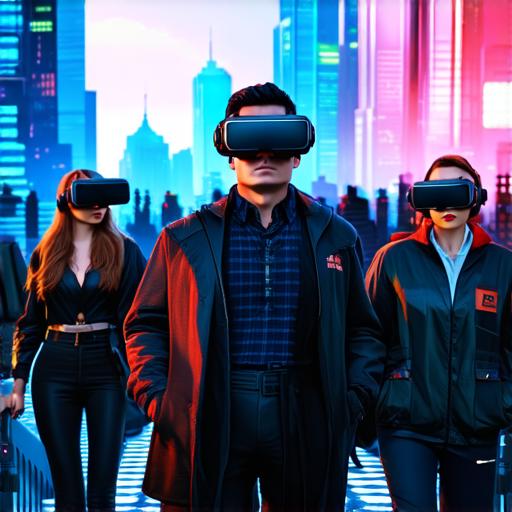
How does virtual reality provide assistance?
Virtual reality (VR) is a technology that simulates a 3D environment that can be interacted with in real-time. VR has gained popularity in recent years due to its ability to provide immersive experiences that can enhance learning, training, and simulation.
Education
Virtual reality can revolutionize the way students learn by providing them with a more interactive and engaging experience. With VR, students can explore different parts of the world or even travel back in time to see historical events unfold. This technology can also help students visualize complex concepts that are difficult to understand through traditional teaching methods.
For example, a biology teacher can use VR to take their students on a virtual tour of the human body. This will allow them to explore different systems and organs in a more interactive and engaging way. Similarly, an art teacher can use VR to give their students a virtual studio where they can create 3D models or even design their own virtual reality environments.
Training
Virtual reality can also be used for training purposes. Many industries have already started using VR to train their employees in a more interactive and immersive way. For instance, medical professionals can use VR simulations to practice surgical procedures without risking the life of a patient. Similarly, pilots can use VR simulators to practice flying in different scenarios, such as bad weather or emergencies.
Virtual reality can also be used for customer service training. For example, an airline company can use VR simulations to train their cabin crew on how to handle different situations, such as a medical emergency or a passenger with special needs. This will allow them to provide better service and improve the overall customer experience.
Simulation
Virtual reality can also be used for simulation purposes. Engineers and architects can use VR to create virtual models of their designs, which can be tested and refined before being built in the real world. This will save time and money by reducing the number of physical prototypes that need to be created.
Similarly, scientists can use VR simulations to conduct experiments that are too dangerous or expensive to perform in the real world. For example, researchers can use VR to simulate the effects of a nuclear explosion on different materials, without risking human lives. This will allow them to better understand the behavior of these materials and improve safety measures.
Case Study: Virtual Reality in Military Training
The US military has been using virtual reality for training purposes for several years now. In 2017, the Army announced that it was investing $62 million in VR technology to train soldiers for combat. This includes developing VR simulations of battlefields and enemy positions, as well as training soldiers on how to use different weapons and equipment.
One example of this is the Army’s Virtual Training Environment (VTE), which allows soldiers to practice their marksmanship skills in a virtual environment. The VTE uses sensors to track the movements of soldiers and provide real-time feedback on their accuracy and speed. This technology has been shown to improve the performance of soldiers in combat situations, as they are better prepared for the challenges of the battlefield.
Expert Opinion

Dr. Richard Castellanos, a professor of computer science at the University of California, Irvine, believes that virtual reality has enormous potential in education and training. “Virtual reality can provide students with immersive experiences that can enhance their learning,” he says. “It can also be used for training purposes to simulate real-world scenarios, which can improve safety and reduce costs.”
Summary
In conclusion, virtual reality provides an excellent opportunity for education, training, and simulation. It allows students and professionals to experience immersive environments that are difficult or impossible to replicate in the real world. Virtual reality also allows for safe and cost-effective training simulations, which can improve performance and reduce risks. As VR technology continues to evolve, we can expect even more innovative uses of virtual reality in education and training.


